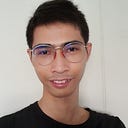Member-only story
Emoji Are the Future of Effective Web Design 😃
Making full use of emoji to dramatically ↗️ improve the user interface of your web application ❤️
A recent study published by Adobe on July 15, 2019, states that:
78% of emoji users agree that emoji should continue to strive for inclusivity
64% are willing to make purchases via emoji
The Emoji Trend Report shows that emoji are widely accepted and used by Gen Z, especially on messaging platforms. Hence, there might be a day where emoji are the norm when designing websites. Personally, I have tried replacing icons with emoji in one of my current projects, and it turned out better than expected.
Current Web Design Trends
Long gone are the days where web applications only required good content and functionality. Aesthetics is now one of the most important factors, like how most people will be in love 😍 with a beautiful or handsome partner over an ugly one. Trends and principles have been moving forth and back with no direction in mind. As a result, the web design trend is getting more brutal and sparse these days. Let’s have a look at common trends from the past few years:
🔹Flat design and material design
Flat design is based on minimalism, with a colour palette restricted to just a few basic colours such as red, blue, green, and yellow. Logos, buttons, and icons are flattened for a simpler and easy-to-view user interface. However, it posed a problem where users can’t determine which buttons or images are clickable. Then came material design, which is based on a paper and ink concept, to create realistic shadows and hover effects to separate buttons and images. This provides an interactive interface to attract users’ attention.
📄 Single page application
Single page application started off in social media, where vertical scrolling would serve content to the users. Users can simply scroll vertically to load the next content. Dynamic loading is required to populate the content in the scroll.

